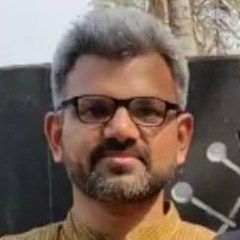As the number of COVID-19 cases kept on increasing in April, the Indian government appointed Dr DCS Reddy, a former professor at the Institute of Medical Sciences at Banaras Hindu University, as the head of the research group on Epidemiology and Surveillance to chart out ways to contain the disease.
The team's recommendations have come handy for the Indian Council of Medical Research (ICMR) to formulate strategies to fight the pandemic.
Dr Reddy is the guest on the latest episode of Onmanorama's weekly podcast 'Let's Talk', where he explains effectiveness of India's COVID-19 fight, criticism against lockdown, variations in COVID surge in different parts of the country, how India should be prepared to fight pandemics and how long will India have to live with COVID.
This is the edited excerpts from the podcast.
You can listen to the 20-minute podcast here.
How effective is India's strategies to contain COVID-19?
Kerala reported India's first COVID-19 cases and the state managed the situation really well. The state's successful methods in contact tracing, home quarantine measures and follow-up with the help of grass-root level health workers have won wide appreciation. India began screening international travellers, testing symptomatic persons and quarantining them when the number of cases began to rise. The country also exhorted people, using various communication channels, about the importance of wearing masks, hand hygiene and social distancing.
The country went into a lockdown when the number of COVID-19 cases increased. The objective was reduce burden on the health system.

Did the lockdown achieve its objectives?
India could keep the curve lower than many other countries because of the lockdown. Let us examine the number of cases in April and May. A day before lockdown, India had 500 cases. By May 17, the cases increased to 95,000. This was a significant if we compared it with other countries. UK had two lakh cases, Italy had 1,99,000 cases while Spain had 2,48,000 in the same period. Our action saved more than 80,000 infections. It also keep the burden off our health system.
What about the criticisms against lockdown?
There were two main criticisms. One was that we did not do testing widely and if we tested more we would have detected more cases. The second criticism was that we went into lockdown with out adequate preparations and as a result, the economy and normal life were affected.
What should India do to fight pandemics in future?
Pandemics are not new to India. We had experienced Avian Influenza, Severe Acute Respiratory Syndrome, Swine flu, Ebola and Nipah. Some of them were localised while others were widespread. But none of them were as huge as COVID-19. This is a wake up call for future epidemics.
Most of these viruses are of animal origin.

It is said that there are 1.7 million virus species in animals and half of them are capable of jumping over to humans. Besides, the scientific advances are a double-edged sword. They enhance our capacity to detect, trace, prevent and treat epidemics through advanced interventions such as vaccines. On the other, increasing globalisation, rapid travel ad high connectivity increase the virus spread from one place to another.
Being a vast and divergent country, straightjacketed epidemic control approach may yield very good result in some places and not so good result in other places. India should adapt a generic protocol issued at the national level to the local condition.
How could India better fight pandemic with the help of use data and technology?
We have excellent know-how in molecular medicines as well as modelling to predict the course of virus spread. But modeller requires good surveillance system and data repositories. Only then they can come up with better figures.
How long we have to live with COVID-19?
We use models for predictions. If assumptions are based on robust data, predictions have value. This is a new virus and epidemic is recent and there is paucity of good data. For that reason, though there are many models, the predictions are going all over. However, we can see that there is an increase in cases everyday. That means we are still on the ascending limb of the epidemic curve. We may have to watch the occurrence of cases for sometime.
Listen to previous episodes of Let's Talk here
















.jpg.transform/170x160/image.jpg)
